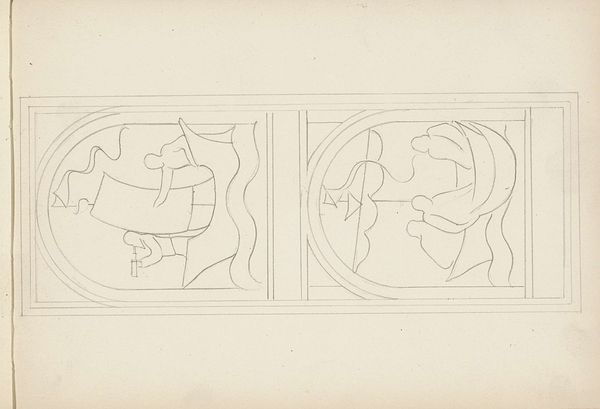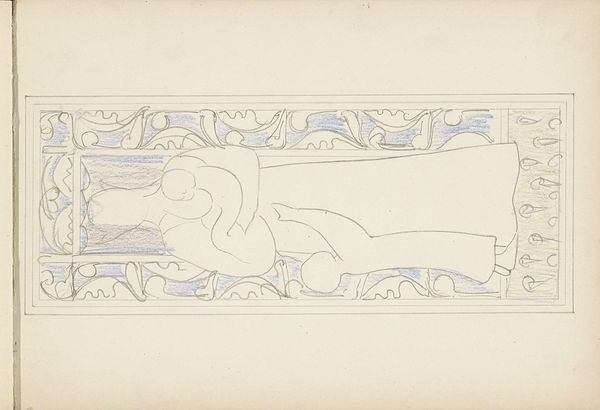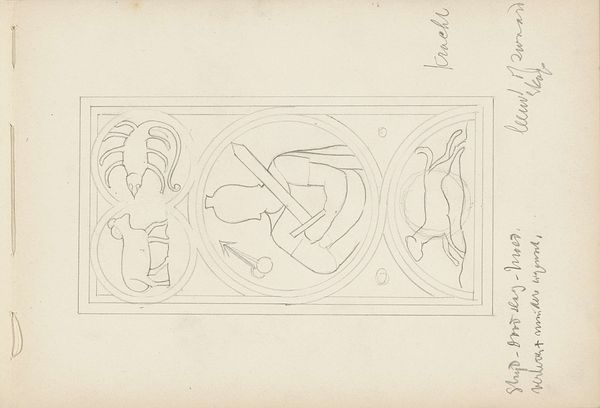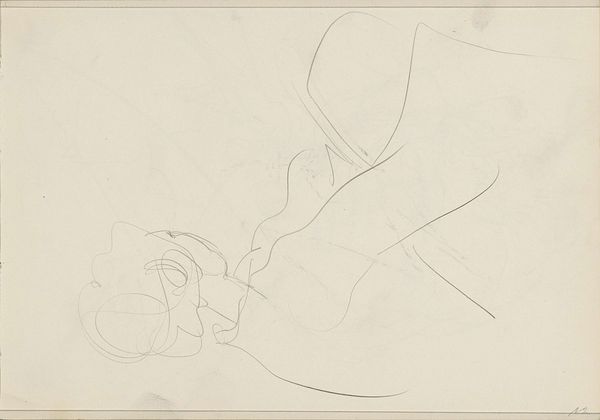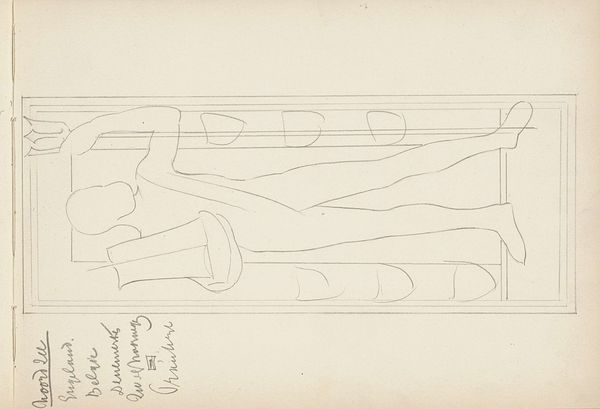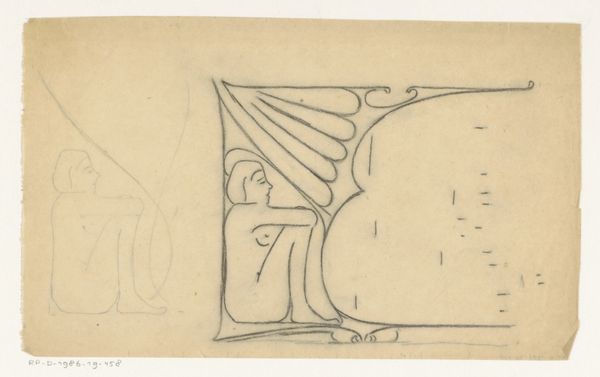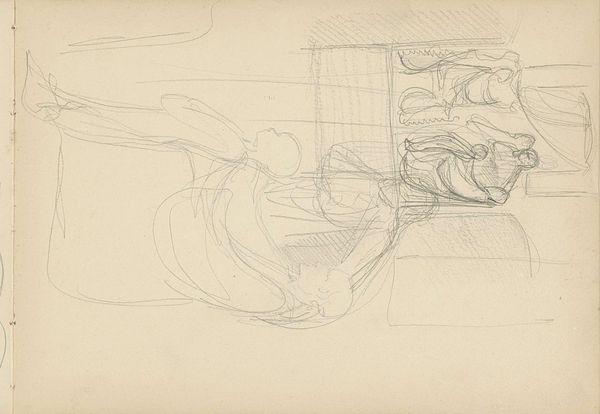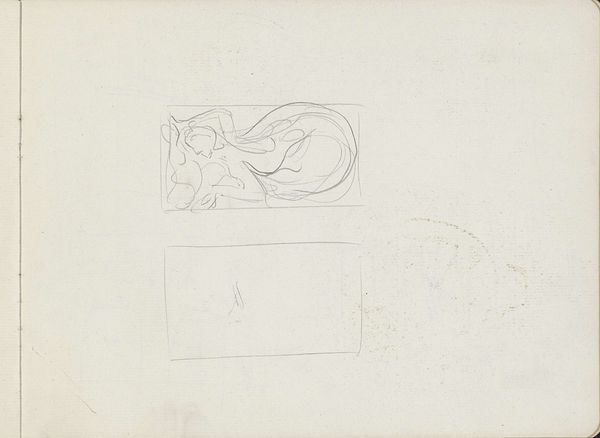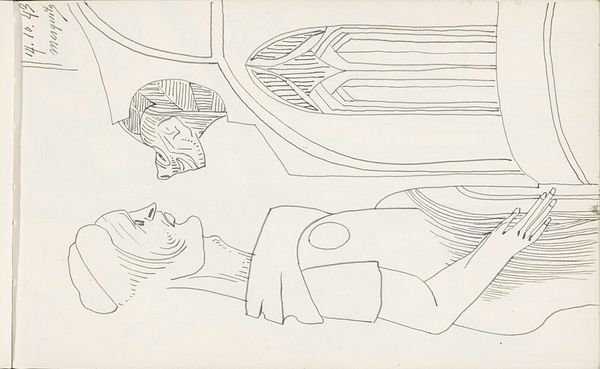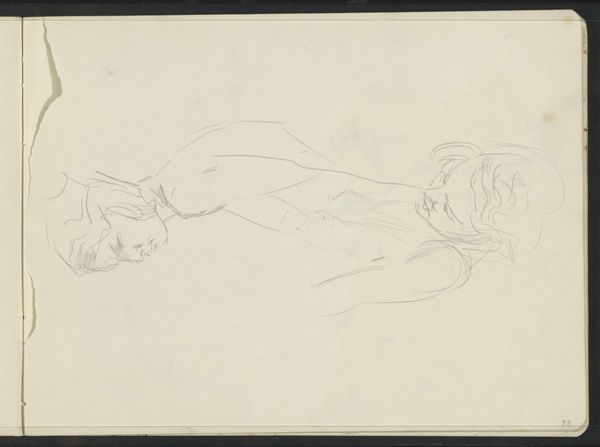
Ontwerp voor een venster met een zittende vrouw en putto in een omlijsting 1900 - 1903
0:00
0:00
drawing, pencil
#
portrait
#
drawing
#
art-nouveau
#
figuration
#
pencil
#
line
Copyright: Rijks Museum: Open Domain
Editor: We are looking at “Ontwerp voor een venster met een zittende vrouw en putto in een omlijsting” or "Design for a window with a seated woman and putto in a frame", made between 1900 and 1903 by Antoon Derkinderen. It's a pencil drawing that reminds me of the Art Nouveau style with its curving lines. What can you tell us about it? Curator: It's fascinating to consider the social context and process of creating a design like this for a window. How do you think the labor involved in translating this drawing into a finished stained glass window would have impacted the final artwork and the perception of it by its commissioner, considering class differences? Editor: That's an interesting question. I never considered the amount of work necessary. Are you saying that the manual labor influenced the artistry? Curator: Absolutely. Consider the availability and cost of materials, such as different glass types or pigments, and their effect on production choices. The design of a window itself became a negotiation between aesthetic desires, financial limitations, and available skills. Editor: So the final artwork is, in a way, the outcome of labor conditions as well as artistry? Curator: Precisely. Also, Art Nouveau wasn't just a visual style. The making was an expression of the period's broader socioeconomic tensions concerning labor, craft production, and rising industrialization, with debates about integrating art with everyday living, reflecting in the material choices as well as their use. How else might one read these themes in this drawing itself? Editor: Looking closer at the simplistic lines it suggests that there's more than beauty to Art Nouveau, reflecting labor and economic considerations. That's something new I have learned. Curator: And that simple pencil strokes could represent much deeper cultural considerations in design production opens our minds to what to consider when making, as well.
Comments
No comments
Be the first to comment and join the conversation on the ultimate creative platform.

